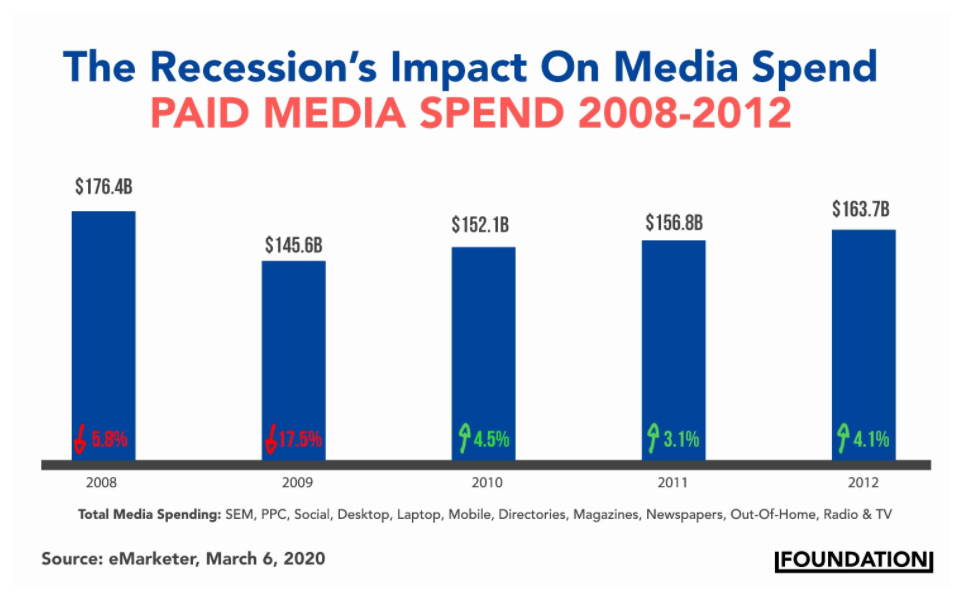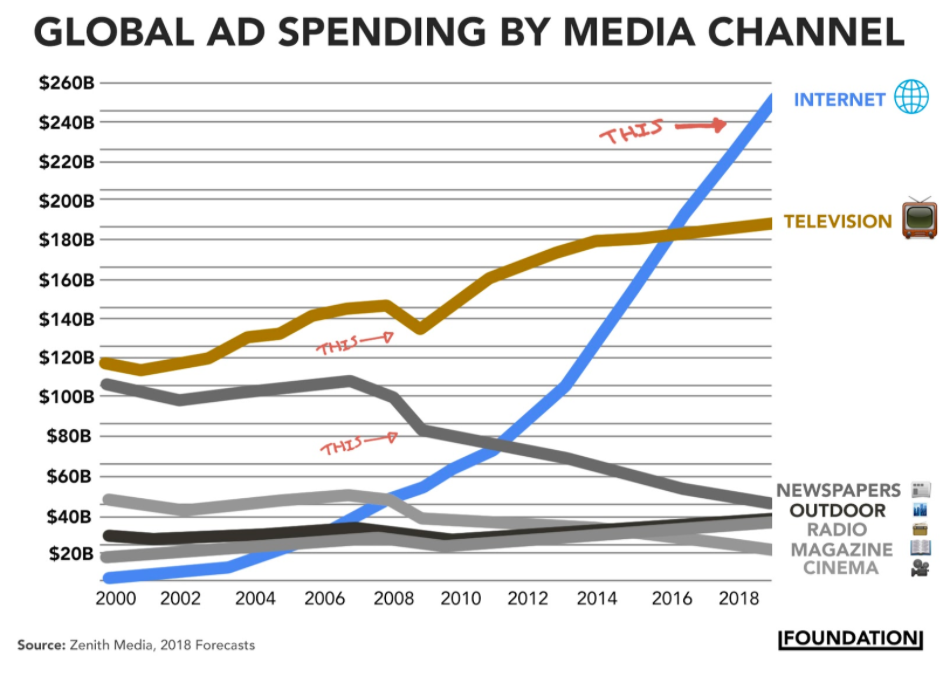Article's Content
Many marketers and advertisers have slashed their media spend to cut costs due to the uncertainty and disruption caused by COVID-19. Some are pulling back their advertising because they don’t want to come off as insensitive for running ads right now. And some have no products or services to promote because their doors are closed and they cannot service customers.
If we look back at past global crises that have hit the world of marketing, the 2008 recession stands out as the most recent time when advertising budgets were reined in and marketing efforts were put on pause. The recession began in 2007 with a depreciation in the U.S. subprime mortgage market and evolved into an international banking crisis with the collapse of the investment bank Lehman Brothers on September 15, 2008.
It would take years for the world’s economy to bounce back from this financial crisis. It took more than six years for the advertising industry to get back to paid media levels that were normal in 2008:

At first glance, we might assume that we should expect another dip in paid media spending. But the truth is…
The world we live in today is a whole lot different than the world in 2008 and 2009. Specifically, the amount of money that brands were investing in digital advertising was 456% less than it is today. On the other hand, the amount they were investing in newspapers was 56% higher than it is today. And while television, newspaper, radio, magazine, cinema and outdoor advertising all declined during the 2008 recession, digital media thrived:

Not only did digital advertising thrive… it eventually surpassed all other media channels by a wide margin and has continued to grow year after year.
In 2008, the idea of advertising online was still relatively new, and it took a lot of persuasion for brands to buy in.
The brands who did buy into internet advertising were rewarded with lower acquisition costs and a level of expertise in digital marketing that would give them a competitive advantage in the future.
The Digital Difference Between 2008 & 2020
During the financial crisis, people were still going to the movies, reading newspapers and subscribing to magazines. Before today’s crisis, people were already doing those things less frequently than they did in the past and were instead spending more time online. And because the current solution to the COVID-19 crisis is for people to stay at home (social distancing), internet usage is now at an all-time high.
According to a release from Facebook, the company has seen a 70% increase in time spent on its apps in Italy since the crisis arrived in the country (one of the most impacted by COVID-19 at the time). Instagram and Facebook Live views doubled in a week and messaging increased by over 50%. The same usage spike is true for YouTube, TikTok, Snapchat and Twitter.
In late January, when China first went on lockdown, internet speeds in the country lagged as people who were stuck inside went online more and watched videos and livestreams. In Hubei Province, the epicenter of infections, it was reported that mobile speeds fell by more than 50%. In some parts of the world, internet usage is reported to be up 50%. In fact, YouTube and Amazon have both said they would reduce the quality of their streams to help countries deal with the influx of internet traffic amid the coronavirus outbreak.
This is a completely different world than 2008…
More people are online than ever before. More people are using their mobile devices, connecting on social media and watching videos on their favorite platforms. Yet, according to a survey by the Interactive Advertising Bureau, 24% of respondents had paused all advertising spending for the first and second quarters of 2020, and another 46% had reduced spending over that time.
This is where I’m puzzled.
Sure, if you’re in an industry directly impacted by the social distancing (sports, restaurants, barbershops, gyms, concerts, hotels, etc.) then pausing your ad spend makes sense. But for those who are not in those industries, it might make more sense to keep spending as usual—or maybe even spend a little bit more. Why?
Because the number of people using digital is going to be at an all-time high, while the number of businesses advertising to those people is going to be lower than usual. Essentially, it’s a perfect storm for digital advertisers. Yes, you have to account for the fact that a significant number of people are not going to buy right now, but if you’re able to connect with your audience and build a relationship, that connection could last much longer than the quarantine.








